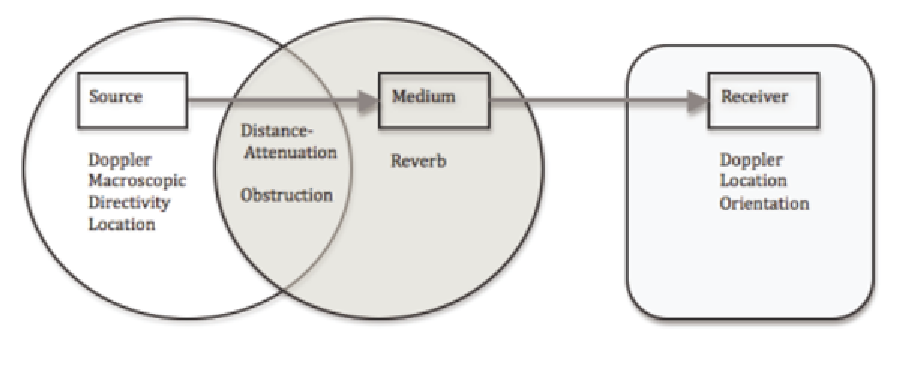Information Technology Reference
In-Depth Information
support MMAPI, but this is reduced when it comes
to fully implementing AMMS.
It is important to point out that these multimedia
APIs are not part of the actual mobile phone OS:
they do, however, enable developers to create
third-party applications in the form of a MIDlet
(.jar and .jad files). Therefore, whilst developers
cannot create 3D audio menu items for the phone's
OS, it provides an excellent platform for testing
the psychophysical considerations of such an
interface in preparation for future spatial audio
implements in the core OS.
In JSR-234, a source-medium-receiver model
(Paavola & Page, 2005) is employed (see Figure
11). This approach goes beyond the capabilities
of MMAPI.
Using MMAPI alone, sourced audio data can
be started, stopped, paused, and primitively con-
trolled. A summary of the MMAPI process is as
follows: the abstract class, DataSource, locates
the audio content; a Manager class creates the
appropriate Player interface; and the Player in
turn incorporates control methods for rendering
and primitively controlling the audio content (see
Figure 12). Control methods include VolumeCon-
trol, ToneControl, PitchControl, StopTimeCon-
trol, RecordControl and RateControl. No spatial
attributes are capable if using MMAPI alone and
MMAPI's Manager class cannot be expanded to
include this service.
In order to fulfil the requirements of spatial
audio rendering, AMMS was created to extend
MMAPI. Of interest to us in the AMMS package
are GlobalManager, Spectator, and Module. The
GlobalManager class is similar in action to the
MMAPI Manager class, but is also very different
in what interfaces it creates. Therefore, it does
not extend or replace the Manager class and the
MMAPI Manager is still required to create Play-
ers (see Figure 13). The GlobalManager handles
the creation of Module interfaces and allows ac-
cess to the Spectator class.
The Modules implemented via the GlobalMa-
nager are the EffectsModule and the Sound-
Source3D module. In contrast to MMAPI, AMMS
allows several Players to be assigned to one audio
effect (that is, mixing several Player instances).
This allows common effects to be applied to all
Players and this helps to optimize effects on lim-
ited resources. The types of control effects pos-
sible using the EffectsModule interface are
equalization, panning, virtualization, reverb, and
chorus/flanger (Paavola & Page, 2005).
Figure 11. An overview of JSR-234

Search WWH ::

Custom Search